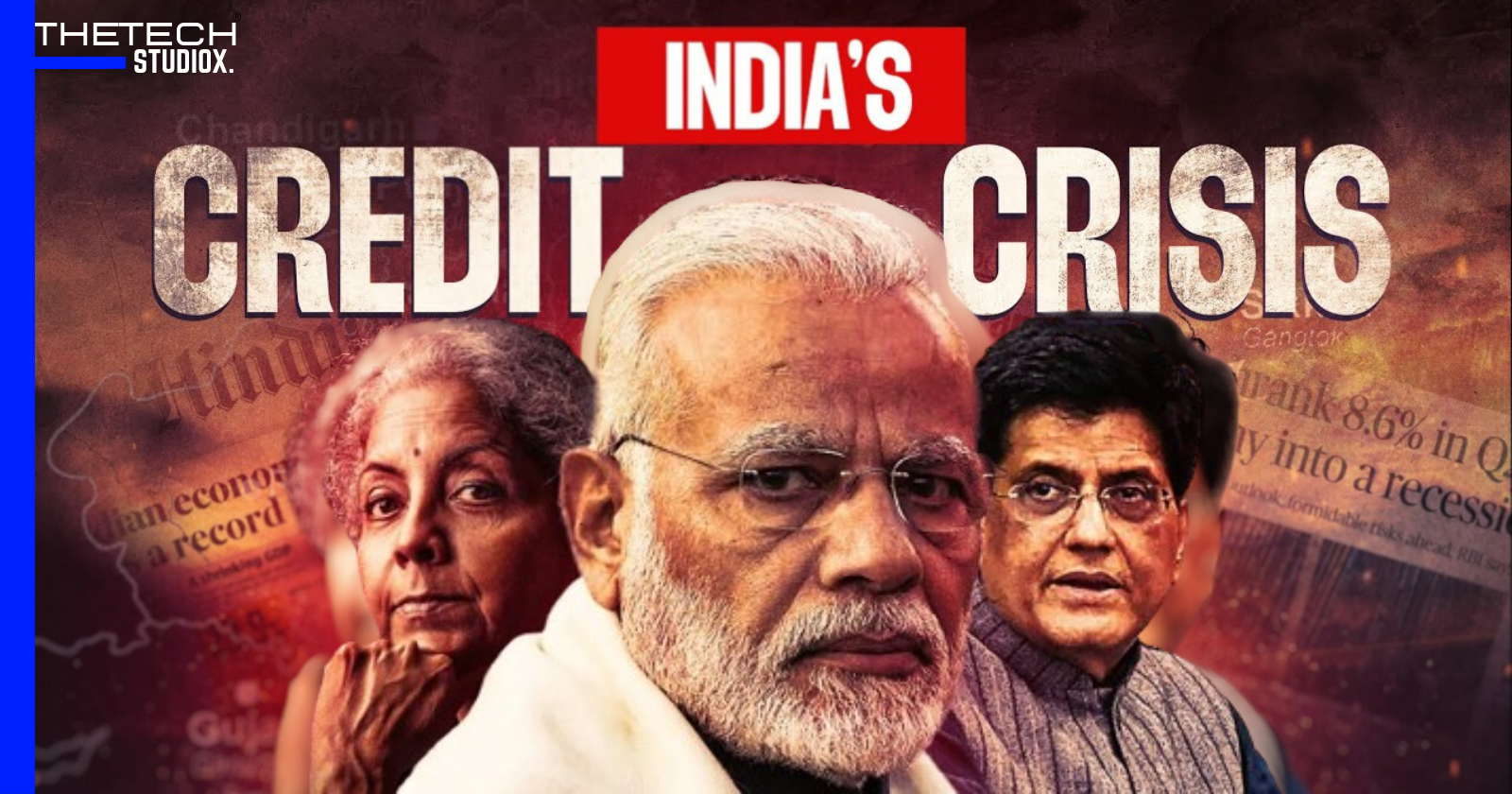Table of Contents
India, over the past decade, has experienced remarkable economic growth, outpacing many global challenges such as pandemics and geopolitical conflicts. However, despite its robust economic performance, India struggles with a poor credit rating on the global stage. This article delves into the intricacies of India’s credit rating, exploring the reasons behind its low rating and its implications for the economy.
Understanding Credit Ratings
Credit ratings play a pivotal role in the global financial landscape, serving as a barometer of a country’s creditworthiness and financial stability. These ratings, assigned by specialized agencies, provide investors with valuable insights into the risk associated with investing in a particular country’s debt securities. Understanding credit ratings is essential for policymakers, investors, and financial institutions alike, as they influence borrowing costs, investment decisions, and overall market sentiment.
Key Components of Credit Ratings
- Rating Agencies: Credit rating agencies, such as Moody’s, Standard & Poor’s (S&P), and Fitch Ratings, conduct thorough assessments of countries’ economic and financial health. These agencies evaluate various quantitative and qualitative factors to determine a country’s creditworthiness.
- Creditworthiness Factors: Credit rating agencies consider a range of factors when assigning credit ratings. These factors typically include a country’s economic growth prospects, fiscal policies, inflation rates, external debt levels, political stability, and institutional strength.
- Rating Scale: Credit ratings are typically assigned on a scale ranging from AAA (the highest credit quality) to D (indicating default). Each rating category reflects a different level of credit risk, with higher-rated countries deemed less likely to default on their debt obligations.
Importance of Credit Ratings
- Borrowing Costs: Countries with higher credit ratings can borrow funds at lower interest rates, as investors perceive them as less risky. Conversely, countries with lower credit ratings face higher borrowing costs, as investors demand higher yields to compensate for the increased risk.
- Investor Confidence: Credit ratings influence investor confidence and market sentiment. A higher credit rating signals financial stability and prudent fiscal management, attracting investors and fostering capital inflows.
- Access to Capital Markets: Credit ratings also impact a country’s ability to access international capital markets. Higher-rated countries enjoy greater access to global capital, enabling them to raise funds for infrastructure development, economic stimulus, and other initiatives.
Challenges and Limitations
- Subjectivity: Credit ratings are inherently subjective, as they rely on analysts’ judgments and assessments of economic data and policy frameworks. This subjectivity can lead to discrepancies in ratings and challenges in predicting credit events accurately.
- Pro-Cyclicality: Credit rating agencies’ methodologies and criteria can sometimes exacerbate economic cycles. Downgrades during periods of economic weakness can amplify market volatility and constrain countries’ ability to access affordable financing.
- External Influences: Global economic trends, geopolitical developments, and market dynamics can also influence credit ratings. Changes in investor sentiment or shifts in risk perceptions can impact a country’s creditworthiness, regardless of its underlying fundamentals.
India’s Economic Growth vs. Credit Rating Disparity
India stands as a paradox in the global economic arena, showcasing remarkable growth juxtaposed with a disheartening credit rating. Over the past decade, India has exhibited robust economic expansion, consistently outpacing many developed nations and emerging markets alike. Despite this commendable performance, the disparity between India’s economic growth and its credit rating remains stark and perplexing.
Factors Influencing India’s Credit Rating
Several factors contribute to India’s poor credit rating:
- Sovereign Bonds and Market Perception: India issues sovereign bonds to raise funds for infrastructure projects. However, market perception, influenced by credit rating agencies, impacts bond prices. A downgrade in credit rating leads to increased borrowing costs for the government.
- Inflation and Economic Stability: High inflation rates and economic instability negatively affect India’s creditworthiness. Despite efforts to curb inflation, India struggles to maintain stable economic conditions, which adversely impacts its credit rating.
- Public Sector Banks and Government Debt: India’s reliance on public sector banks and high government debt-to-GDP ratio raises concerns among credit rating agencies. Political interference in banking operations and excessive government borrowing contribute to a negative perception of India’s financial stability.
Government Efforts and Challenges
The Indian government acknowledges the importance of addressing the credit rating issue and its implications for the economy. Efforts to improve transparency, fiscal discipline, and structural reforms are underway. However, challenges persist, including resistance from credit rating agencies, structural inefficiencies, and geopolitical uncertainties.

Implications for the Indian Economy
India’s poor credit rating has significant implications:
- Higher Borrowing Costs: A low credit rating translates into higher borrowing costs for the government and businesses, hindering investment and economic growth.
- Foreign Investment: Foreign investors view credit ratings as indicators of risk. India’s low rating deters foreign investment, limiting capital inflows essential for economic development.
- Market Perception: India’s credit rating influences market perception, affecting investor confidence, currency valuation, and overall economic stability.
Government’s Response and Advocacy
In response to the disparity between India’s economic growth and its credit rating, the government has embarked on a multifaceted approach aimed at addressing underlying challenges and advocating for a fair assessment of India’s creditworthiness.
Proactive Measures:
- Structural Reforms: The government has undertaken a series of structural reforms across various sectors, including taxation, labor laws, and ease of doing business. These reforms aim to enhance competitiveness, attract investment, and bolster India’s economic fundamentals.
- Fiscal Discipline: Recognizing the importance of fiscal prudence, the government has prioritized fiscal discipline and prudent budgetary management. Efforts to contain fiscal deficits and streamline public expenditure demonstrate a commitment to maintaining macroeconomic stability.
- Transparency and Governance: Transparency and governance reforms are integral to fostering investor confidence and improving India’s standing in the global financial markets. Initiatives such as digitization, e-governance, and anti-corruption measures aim to enhance transparency and accountability in governance.
Advocacy Efforts:
- Engagement with Credit Rating Agencies: The government has actively engaged with credit rating agencies to convey India’s economic narrative and address any misconceptions or biases in their assessments. Through dialogue and cooperation, India seeks to ensure a fair and objective evaluation of its creditworthiness.
- Research and Analysis: The government has commissioned research papers and studies to analyze the factors contributing to India’s credit rating disparity. These analyses provide empirical evidence to support India’s advocacy efforts and advocate for a recalibration of assessment methodologies.
- Global Outreach: India has engaged in diplomatic efforts to garner support from global partners and stakeholders in advocating for a fair assessment of its creditworthiness. Through bilateral and multilateral engagements, India seeks to raise awareness about the challenges it faces and rally support for reforming the global credit rating framework.
Collaborative Approach:
Recognizing the complex nature of the credit rating process, the government adopts a collaborative approach involving policymakers, economists, industry stakeholders, and international partners. By fostering dialogue and collaboration, India aims to address systemic issues, promote transparency, and advocate for a more equitable evaluation of its creditworthiness.
FAQs
1. What are credit rating agencies, and how do they determine a country’s credit rating?
Credit rating agencies assess the creditworthiness of countries based on economic parameters such as GDP growth, inflation, and fiscal discipline. These agencies assign grades ranging from AAA to D, reflecting a country’s ability to repay debt.
2. How does India’s credit rating impact its economy?
India’s poor credit rating results in higher borrowing costs, reduced foreign investment, and negative market sentiment, hindering economic growth and development.
3. What steps is the Indian government taking to improve its credit rating?
The Indian government is implementing structural reforms, promoting fiscal discipline, and advocating for fair assessment methodologies to improve its credit rating and attract foreign investment.
4. Why do credit rating agencies have a significant influence on global financial markets?
Credit rating agencies influence investor perceptions and market dynamics by providing assessments of credit risk, impacting borrowing costs, investment decisions, and overall economic stability.
5. How can India enhance its credit rating and attract foreign investment?
India can improve its credit rating by addressing structural inefficiencies, enhancing transparency, implementing fiscal reforms, and promoting investor confidence through proactive policy measures.
Conclusion
India’s journey towards achieving a favorable credit rating is fraught with challenges. Despite robust economic growth, persistent disparities in credit ratings hinder India’s ability to access affordable financing and attract foreign investment. However, proactive government efforts, coupled with advocacy for fair assessment methodologies, offer hope for a brighter economic future. By addressing structural inefficiencies and promoting transparency, India can enhance its creditworthiness and pave the way for sustainable growth and development.
Also Read The Future of OLA Electric: A Deep Dive into India’s EV Landscape.
Visit The Tech StudioX/Case-Studies For More Detailed Information on the Tech World.





[…] India’s Economic Growth vs. Credit Rating Disparity: Understanding the Divide […]